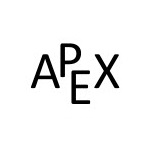5: Exploraciones gráficas de vectores
( \newcommand{\kernel}{\mathrm{null}\,}\)
Ya miramos los conceptos básicos de graficar vectores. En este capítulo, exploraremos estas ideas más a fondo. A menudo se obtiene una mejor comprensión de un concepto “viéndolo”. Por ejemplo, se puede estudiar la funciónf(x)=x2 y describir muchas propiedades de cómo la salida se relaciona con la entrada sin producir una gráfica, pero la gráfica puede aportar rápidamente significado y conocimiento a las ecuaciones y fórmulas. No sólo eso, sino que el estudio de las gráficas de funciones es en sí mismo un mundo matemático maravilloso, digno de exploración.
Hemos estudiado la gráfica de vectores; en este capítulo vamos a dar un paso más allá y estudiar algunas propiedades gráficas fantásticas de vectores y aritmética matricial. Mencionamos anteriormente que estos conceptos forman la base de los gráficos por computadora; en este capítulo, veremos aún mejor cómo eso es cierto.
- 5.1: Transformaciones del Plano Cartesiano
- Anteriormente, limitamos nuestra comprensión visual de la multiplicación de matrices a graficar un vector, multiplicarlo por una matriz y luego graficar el vector resultante. En esta sección exploraremos estas ideas de multiplicación con mayor profundidad. En lugar de multiplicar vectores individuales por una matriz A, estudiaremos qué sucede cuando multiplicamos cada vector en los planes cartesianos por A.
- 5.3: Visualizando Vectores- Vectores en Tres Dimensiones
- Terminamos la última sección afirmando que podríamos extender las ideas de dibujar vectores 2D a dibujar vectores 3D. Una vez que entendemos cómo dibujar correctamente estos vectores, la suma y resta es relativamente fácil. También discutiremos cómo encontrar la longitud de un vector en 3D.
Miniatura: Una combinación lineal de un conjunto básico de vectores (púrpura) obtiene nuevos vectores (rojo). Si son linealmente independientes, estos forman un nuevo conjunto de bases. Las combinaciones lineales que relacionan el primer conjunto con el otro se extienden a una transformación lineal, llamada cambio de base. (CC0; Maschen vía Wikipedia)


